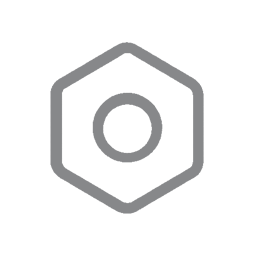Decorative treatments
Chrome plating for aluminum
Decorative treatments
Chrome plating for aluminum
Decorative treatments: chrome plating for aluminum
What is chrome plating for aluminum?
By the term chromatation, Historically understood to be the process by which, on aluminum or magnesium and zinc parts, chemical conversion is induced on the surface of the base metal by reaction with chromium salts, usually hexavalent, in order to achieve better corrosion resistance of the part. Environmental and product regulations (RHOS) have meant that there are now various other types of chromium or chromium-free conversion on the market, which are no longer formulated with hexavalent chromium salts, these conversions no longer go under the name of chromatation, but should properly be referred to as Chromatations or conversions in general.
How does the treatment take place?
Chrome plating thicknesses are very low, around one micron or so, so there are usually no mechanical coupling problems. Chromatation layers obtained with modern trivalent chromium or chromium-free baths are colorless or slightly iridescent, are soft, and have the sole purpose of imparting corrosion resistance or forming the basis for adherence of subsequent, immediate paint
Tobaldini performs colorless chromic conversion treatments with trivalent chromium salts on aluminum alloy materials, both on frame and basket parts.
Decorative treatments: chrome plating for aluminum
What is chrome plating for aluminum?
By the term chromatation, Historically understood to be the process by which, on aluminum or magnesium and zinc parts, a chemical conversion is induced on the surface of the base metal by reaction with chromium salts, usually hexavalent, in order to achieve better corrosion resistance of the part. Environmental and product regulations (RHOS) have meant that there are now various other types of chromium or chromium-free conversion on the market, which are no longer formulated with hexavalent chromium salts, these conversions no longer go under the name of chromatation, but should properly be referred to as Chromatations or conversions in general.
How does the treatment take place?
Chrome plating thicknesses are very low, around one micron or so, so there are usually no mechanical coupling problems. Chromatation layers obtained with modern trivalent chromium or chromium-free baths are colorless or slightly iridescent, are soft, and have the sole purpose of imparting corrosion resistance or forming the basis for the adhesion of subsequent and immediate paint
Tobaldini performs colorless chromic conversion treatments with trivalent chromium salts on aluminum alloy materials, both on frame and basket parts.
Treatable materials
- Aluminum and its alloys
- zamak
- 2011
- 11A
- 6060
- 6082
- 7075
- Ergal
- Anticorodal
- Avional
Regulations
- UNI 9921
Useful dimensions
2700x500x1200 mm
Treatable materials
- Aluminum and its alloys
- zamak
- 2011
- 11A
- 6060
- 6082
- 7075
- Ergal
- Anticorodal
- Avional
Regulations
- UNI 9921
Useful dimensions
2700x500x1200 mm
Sectors
implementing
implementing
Application areas

Electronics

Electric

